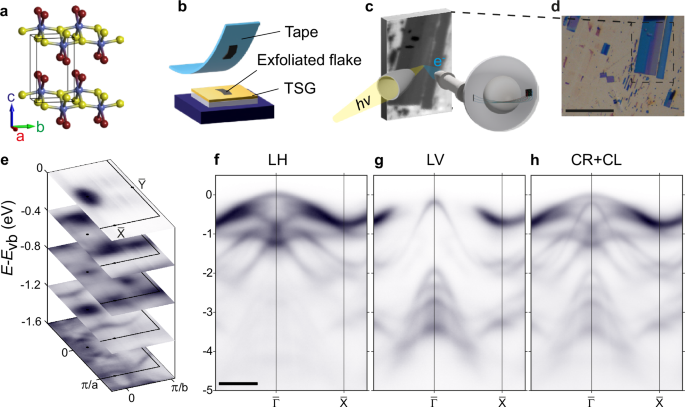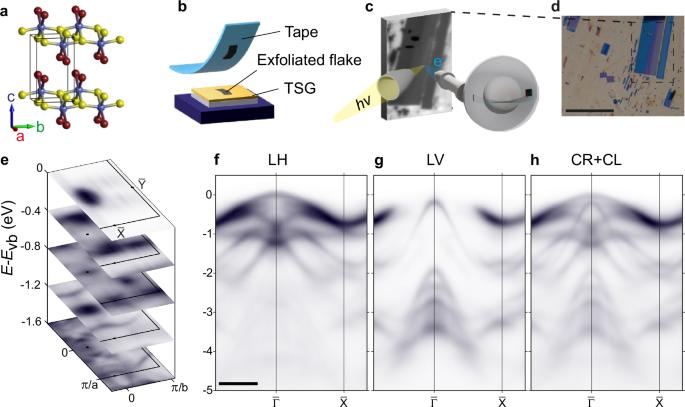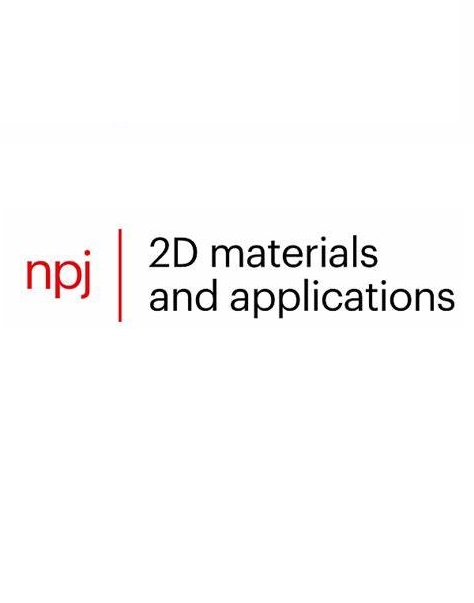Giant exchange splitting in the electronic structure of A-type 2D antiferromagnet CrSBr
IF 8.8
2区 材料科学
Q1 MATERIALS SCIENCE, MULTIDISCIPLINARY
引用次数: 0
Abstract
We present the evolution of the electronic structure of CrSBr from its antiferromagnetic ground state to the paramagnetic phase above TN = 132 K, in both experiment and theory. Low-temperature angle-resolved photoemission spectroscopy (ARPES) results are obtained using a novel method to overcome sample charging issues, revealing quasi-2D valence bands in the ground state. The results are very well reproduced by our $${\rm{QSG}}\hat{{\rm{W}}}$$ calculations, which further identify certain bands at the X points to be exchange-split pairs of states with mainly Br and S character. By tracing band positions as a function of temperature, we show the splitting disappears above TN. The energy splitting is interpreted as an effective exchange splitting in individual layers in which the Cr moments all align, within the so-called A-type antiferromagnetic arrangement. Our results lay firm foundations for the interpretation of the many other intriguing physical and optical properties of CrSBr.


A 型二维反铁磁体 CrSBr 电子结构中的巨型交换分裂
我们从实验和理论两方面介绍了 CrSBr 在 TN = 132 K 以上从反铁磁基态到顺磁相的电子结构演变。低温角分辨光发射光谱(ARPES)采用一种新方法克服了样品充电问题,揭示了基态的准二维价带。我们的\({\rm{QSG}}\hat{\rm{W}}\)计算很好地再现了这些结果,并进一步确定了 X 点的某些带是主要具有 Br 和 S 特性的交换分裂态对。通过追踪带位置与温度的函数关系,我们发现分裂在 TN 以上消失了。能量分裂被解释为单个层中的有效交换分裂,其中 Cr 矩全部对齐,即所谓的 A 型反铁磁排列。我们的研究结果为解释 CrSBr 其他许多有趣的物理和光学特性奠定了坚实的基础。
本文章由计算机程序翻译,如有差异,请以英文原文为准。
求助全文
约1分钟内获得全文
求助全文
来源期刊

npj 2D Materials and Applications
Engineering-Mechanics of Materials
CiteScore
14.50
自引率
2.10%
发文量
80
审稿时长
15 weeks
期刊介绍:
npj 2D Materials and Applications publishes papers on the fundamental behavior, synthesis, properties and applications of existing and emerging 2D materials. By selecting papers with the potential for impact, the journal aims to facilitate the transfer of the research of 2D materials into wide-ranging applications.
 求助内容:
求助内容: 应助结果提醒方式:
应助结果提醒方式:


